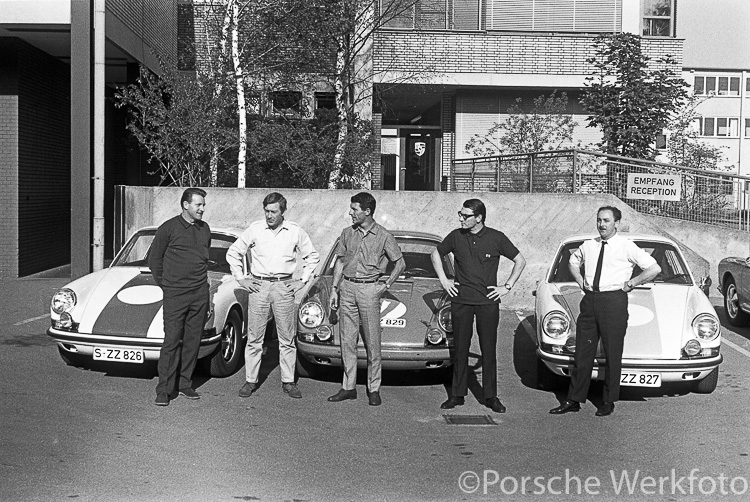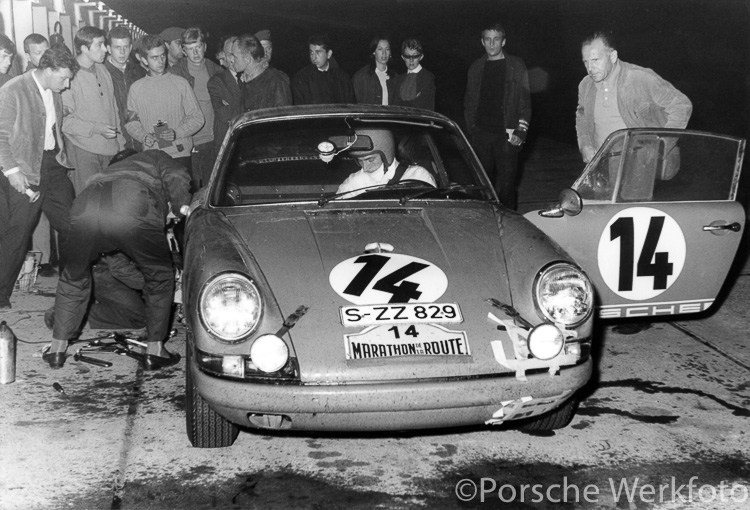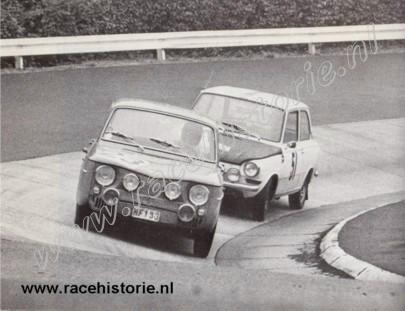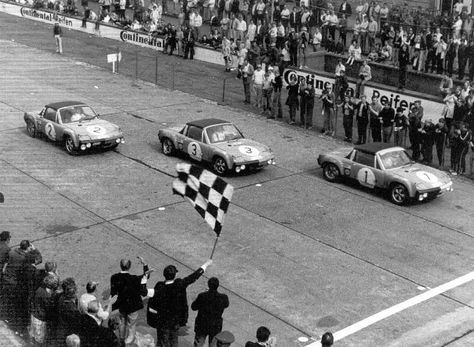The automobile industry really took off in the States in the 1950s. Between America being the only one of the world’s superpowers to have not suffered great industrial loss in World War II, the Highway Project connecting cities to their suburbs and even to rural areas and rising wages making them accessible to even the working class, the automotive industry in the United States was in a spot it had never been in and hasn’t been in since. Many different manufacturers popped up in the late 40s and early 50s, Nash, Studebaker, and today’s subject, Tucker, and its lone representative, the Tucker 48 #1004.

The Tucker 48, often nicknamed the Tucker Torpedo, has a whole different, interesting story behind it, but in short, the Tucker 48 was conceived by Preston Tucker, an automotive entrepreneur and motor racing fan, in 1946. The car was one of the modern proposals of its day, and once it secured a contract to be produced, it appeared possible that the United States automotive industry could skip forward a few years. Tucker had hired the very best in the industry to assist him, and pushed for some incredible inclusions. The Tucker 48 was to include fuel injection, which took another 35 years to be generally included in American automobiles, disc brakes, which took 20 more years, a roll bar, a pop-out windshield, and more. Tucker intended to sell them for $1000, but the eventual retail cost was closer to $4000. $4000 is the equivalent of about $44000 today, about what an Audi TT costs. The original Tuckers were hand built, and cost $5000 to make. It likely would have cost much less on the assembly line.
However, the U.S. Securities and Exchange Commission was very wary of new automotive launches and kept a close eye on Tucker. After all, they’d given millions of dollars worth of grants to Kaiser-Frazer, and Kaiser-Frazer had wasted that money. Seemingly cracking under the SEC’s pressure and recognizing that this project could, with one wrong move, fall apart, several executives left the project, and backers began to pull out, taking this as a sign that things weren’t going well. Things weren’t going terribly, but indeed the project was one step away from the cliff’s edge, and once a journalist criticized the lack of a reverse gear in the first prototype, everything fell apart and stocks plummeted. Using some iffy comments by Tucker in a letter he had published in various newspapers in June 1948, U.S. Attorney Otto Kerner, Jr. ordered Tucker fork over his corporate records. Tucker did so, and in February 1949 a grand jury investigation commenced. That October, Tucker and his associates were brought to trial on 25 charges of mail fraud, one charge of conspiracy to defraud, and five charges of violating SEC regulations, and after a wild trial full of emotion, acknowledgement of corruption, demonstration of what the cars could do, and leaked documents, Tucker and associates were acquitted. Whatever Kerner’s reason for pursuing Tucker, the prosecution had completely failed to prove their case, and the defense had managed to turn the prosecution’s witness statements in the defense’s favor. Kerner would later be sent to prison on unrelated conspiracy-related charges in 1974, the first time someone in his position had gone to prison on such charges.
Despite his acquittal and optimistic outlook, Tucker’s automobile franchise was ruined. The company collapsed, and only 50 Tucker 48s were produced, all of them considered final prototypes. Preston Tucker himself died of lung cancer in 1956.
The 50 Tuckers had been variously distributed across the country by Preston Tucker’s subsidiaries in mid-1948, and once the possibility of mass manufacturing had been ruled out (at the time, believed to just be for the next couple months) in late 1948 or early 1949, the subsidiaries distributed them to various car salesmen. Tucker 1004, a gray car, was sent out to Tucker’s Pittsburgh distributor, then sold to Red Harris, who ran a nearby used car lot. Joe Merola of nearby Wilkinsburg, whose brother ran a similar used car lot, was given the okay to use the Tucker in NASCAR Grand National races.

The car, numbered 12, was sponsored by Joe Nagel, Jr.’s, another dealership in Pittsburgh. Cleverly, the number was actually part of the address (12 Charles Street, Mt. Oliver neighborhood, Pittsburgh), and the 12 was written on the side in different locations to make it read off properly. Unfortunately, Merola, who had run one Grand National race in 1949, wouldn’t be able to show off his sponsor very much, as in his first race in the Tucker at the Canfield Speedway, he broke his right rear axle on lap 1. This turned out to be a major problem with the 50 final prototype Tuckers, and one Preston had been aware of. The engine had so much torque that it was common to snap an axle in first gear. The manufacturers were aware of this and would have addressed it on the production line, but of course the Tucker 48 never got that far.
After this, the car was brought up to Monroe County Fairgrounds in New York, but again it didn’t last a lap, this time due to a ball joint. It was repaired in time for a one lap exhibition race against race winner Curtis Turner. It promptly snapped its axle again before that lap was finished. Yes, that’s three races in a row, including a one lap dash race, in which Merola’s race ended before lap one.
Merola then showed up to the Dayton Speedway later that year. It’s not known what car he was running. He was probably in a Ford. In any case, Merola, though many laps behind, was able to last most of the race, but he was caught up in a major race-ending crash where Johnny Mantz pierced the guardrail and threw debris onto the track surface. Whatever car Merola was running piled into this debris, and Merola was sent to the hospital with bruises and cuts.
Again, whether or not he ran the Tucker is unknown, but the Tucker was retired from NASCAR use after 1950. Merola ran a few races in 1951 before a crash left him with a bruised heart (which may or may not have been due to the crash in 1950, again it’s not really known) and retired from racing, though he remained a fan. Joe Merola moved to Florida in the mid-50s and had a successful career in aircraft sales, making sure to frequent Daytona whenever NASCAR stopped by and to tell the story of the car that wouldn’t stop breaking down. He died in 1994, in his late 60s.
Tucker 1004 was eventually sold by Harris to fellow Pennsylvanian Wayne Weaver, and in 1962 Weaver sold it to Raymond Burton of Fairfax, Virginia, who held onto the car for about 30 years. The years had not been nice to the car, and an incident where a few thieves stole some of the car’s parts in the late 60s didn’t help matters, but in 1976, Burton contracted Bill Hamlin to restore Tucker 1004. It took two years, but by mid 1978, the car was good as new, its interior revamped and renovated, and a new set of maroon paint replacing the old gray color. Burton took great care of the car afterwards, and in 1988, he brought it out to California for the filming of Francis Ford Coppola’s pet project Tucker: The Man and His Dream, where it showed up alongside 21 of its brethren. Tucker 1004 appears in a few bits in the movie, with Burton behind the wheel. Burton in fact heads a parade of Tuckers at one point in the film.
Ray Burton died a few years after the film, and his son Vic Burton took hold of the car. He briefly loaned it out to Richard Petty to use in Petty’s hometown museum for a little (apparently, neither knew of its NASCAR connection, and it seems Petty had it in his museum for other reasons), then sold it off to Happy’s Custom Auto Accessories in Las Vegas. Happy’s held it for some time, then sold it off to the Toyota Automobile Museum in Nagakute, Japan, who have held it ever since.

You’ll probably need a plane ticket if you want to go see Tucker 1004, but if you just want to see a Tucker in person, many more options are available. Of the 50 Tucker 48s produced, only three are known to have been destroyed, and quite a few museums have them on public display. Time has been nice to the Tuckers, which were an interesting experiment done in both by heavy bureaucratic corruption, the media sensationalizing a scoop, and an ambitious owner who showed perhaps a little too much passion for his passion project. However, NASCAR was not so nice to the one Tucker that hit the high banks alongside the Lincolns and Studebakers in 1950.
Sources:
“Torpedo Car Will Be Made In Chicago”, Traverse City Press-Journal, February 11, 1946
“An Open Letter To The Automobile Industry”, Preston Tucker, June 15, 1948
Court records of Stella v. Graham-Paige Motors Corporation, 1955
Tucker: The Man And His Dream, 1988 film by Francis Ford Coppola
“Identity of the Tucker 48 that competed in NASCAR is finally revealed”, March 2012 edition of Hemmings Classic Car




